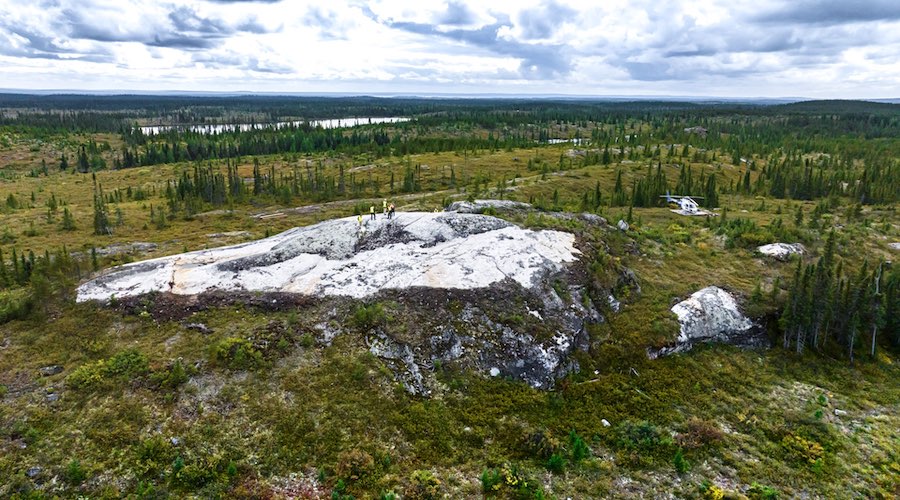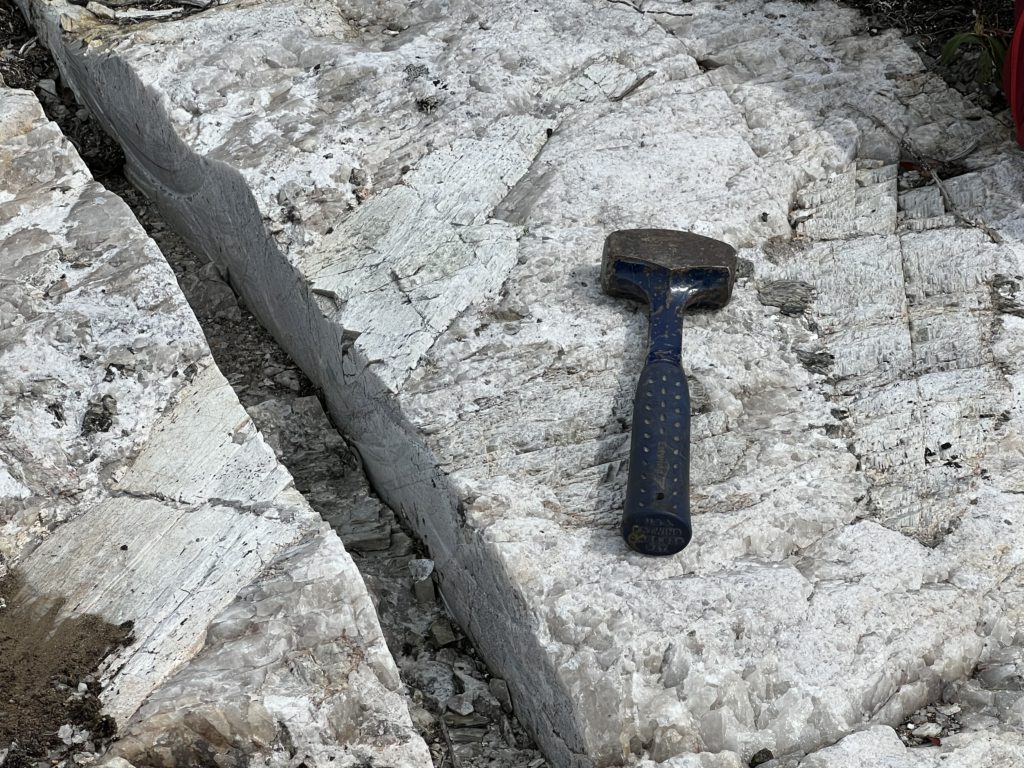
Patriot Battery Metals (TSX: PMET; ASX: PMT) has leveraged its management’s experience in Australia — the world’s largest lithium producer — to make lightning-fast progress at its Corvette project in Quebec.
From discovery in 2017 to an initial resource in 2023 that outlined one of the largest lithium pegmatite resources in the Americas, the company’s now eyeing its next milestone: A mine that will feed into North America’s nascent EV supply chain.
“The scale and the location of the Corvette project imply that it’s going to be a useful project to help underwrite the balance of the supply chain that’s required to support value-added chemicals the energy transition requires,” CEO Ken Brinsden told The Northern Miner in an interview in February.

Brindsen, who shepherded Pilbara Minerals from junior explorer to a top global lithium raw materials entity, took the reins at Patriot in January.
The management shuffle saw him transition from non-executive chair to CEO, president and managing director residing in Montreal, while Blair Way, who has steered the team to this point as CEO since May 2022 took the COO role to provide hands-on management as Corvette moves through the next stages toward development.
With more than 100,000 metres of drilling, Patriot reported an initial inferred resource for the CV5 deposit last June of 109 million tonnes at 1.42% lithium oxide for 1.6 million tonnes lithium oxide.
Corvette, the eighth largest lithium pegmatite globally, hosts large spodumene crystals, enhancing processing efficiency and recovery rates, Brinsden said. With C$133 million in funds as of the second fiscal quarter — much of it from Albemarle, which invested C$109 million last year — the company said it is well-financed to push forward with exploration, technical studies, and the permitting process.
Quebec has become a hard rock lithium hotspot as companies vie to supply the electric vehicle market. Last year, the federal government approved Galaxy Resources’ (now Arcadium Lithium (ASX: LTM)) James Bay open-pit project. Sayona Mining (ASX: SYA) began production at its 75%-owned North American Lithium project in Quebec last year. Perth’s Winsome Resources (ASX: WR1) recently identified a significant lithium resource, making Adina North America’s leading hard-rock lithium project.
The heavy presence of Australians is no coincidence.
The established lithium market in Australia, bolstered by Chinese demand, has led to higher equity valuations for Australian lithium companies. Patriot’s Australian listing has given it access to those same investors, which has partly driven its success.
Brinsden and Way, in separate interviews, said they both anticipate that as North America and Europe develop their lithium supply chains, Canadian projects like Corvette could see similar increases in valuation and investor interest.
Brinsden views the strategic geographical advantages of Western Australian mines in serving North Asian markets are comparable with Quebec’s potential to cater to North America and Europe. Way and Brinsden both see the geographical positioning of their project as a key advantage, with Quebec’s resources like Corvette poised to reduce reliance on distant supplies and potentially Western supply chains.
While the Australian hard-rock lithium mining industry benefits from strong ties with China, driving demand, investment, and growth, dependency on China also exposes the supply chain to geopolitical and economic risks. Brinsden says North America’s current push to diversify relationships and avoid reliance on a single market to develop resilient lithium supply chains is a good call.
In his experience, the Australian government has had a hands-off approach compared with the proactive, supportive stance of Canada’s Quebec province, and the coordinated approach to industry growth laid out in the federal Critical Minerals Strategy.
The discovery of a major spodumene lithium deposit in the Americas stemmed from a previously overlooked early 2000s geological report by Virginia Mining, which, despite focusing on base and precious metals, contained a footnote in French indicating the presence of lithium-rich spodumene.
Seizing this clue, the team used Google Earth to locate and then stake a pegmatite outcrop, now known as CV1.

At this time, part of the property was under the control of Osisko Mining due to a series of acquisitions but was not being actively explored for lithium. Patriot Battery Metals (formerly known as 92 Resources and then Gaia Metals) negotiated an option agreement between 2016 and 2017 when the lithium market was starting to heat up.
Despite initial exploration challenges and a temporary lull in lithium prices, the company kept the option agreement alive.
During the early days of the covid-19 pandemic when travel restrictions limited Way’s ability to work internationally, he advocated for drilling, which started as lithium prices began to recover in 2020.
The company rebranded to Patriot Battery Metals in June 2021, and raised money for more extensive drilling before acquiring the project outright. Drilling success throughout 2021 and 2022 attracted strategic investments, notably C$109 million from Albemarle, a leading global lithium producer, last year.
The investment at C$15.20 per share implied a valuation on a fully diluted basis of C$2.2 billion – a far cry from its recent market capitalization of C$801.9 million at C$6.96 per share.
Brinsden says Patriot is committed to a strategy of responsible but rapid development. Brinsden’s expertise is shaping a mining operation that prioritizes extraction and ecological and social integrity.
“We’re not just about mining lithium; we’re laying the groundwork for a cleaner, more sustainable world,” Brinsden said, outlining the big-picture vision.
“Our discovery at Corvette is not just about unveiling a lithium deposit; it’s about reshaping the future of energy in North America,” Way said.
This year, Patriot aims to deliver an updated resource estimate for CV5 by the third quarter, moving towards a prefeasibility study by year-end and advancing permitting.
It also plans to expand exploration and drilling, with CV13 and additional pegmatite clusters CV8, CV9, CV10, and CV12 getting more attention. The company also intends to demonstrate the exploration potential along the 50-km lithium pegmatite trend at the Corvette property, including assessing unexplored sections and discovering new spodumene clusters.